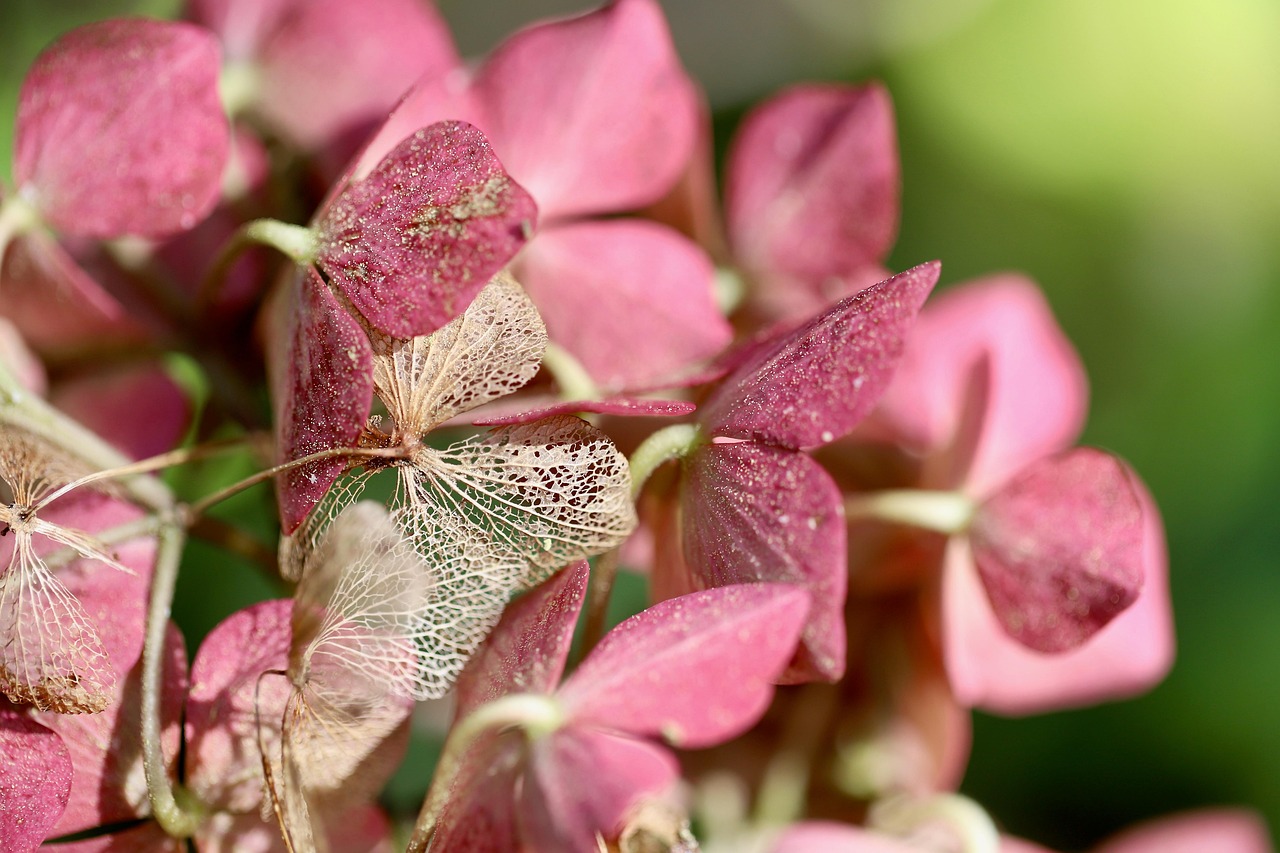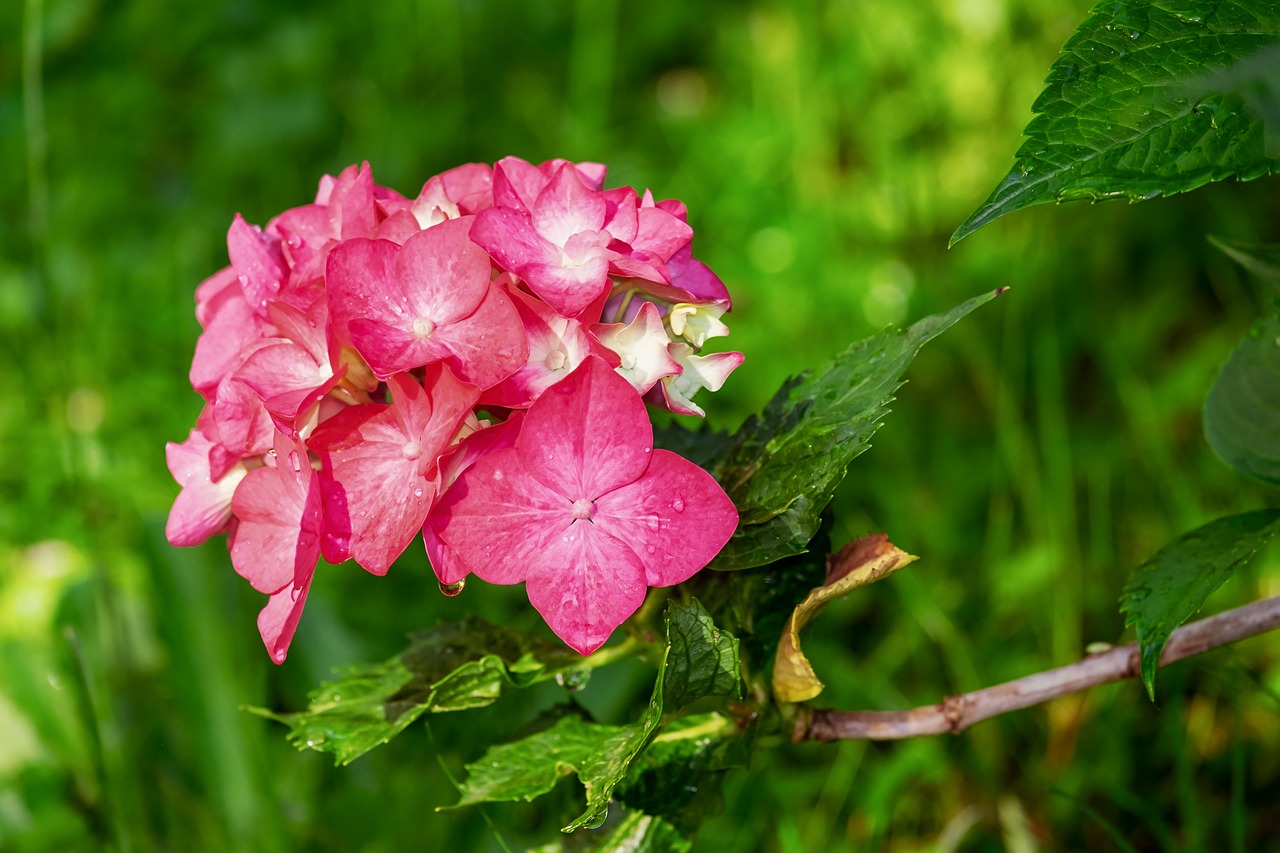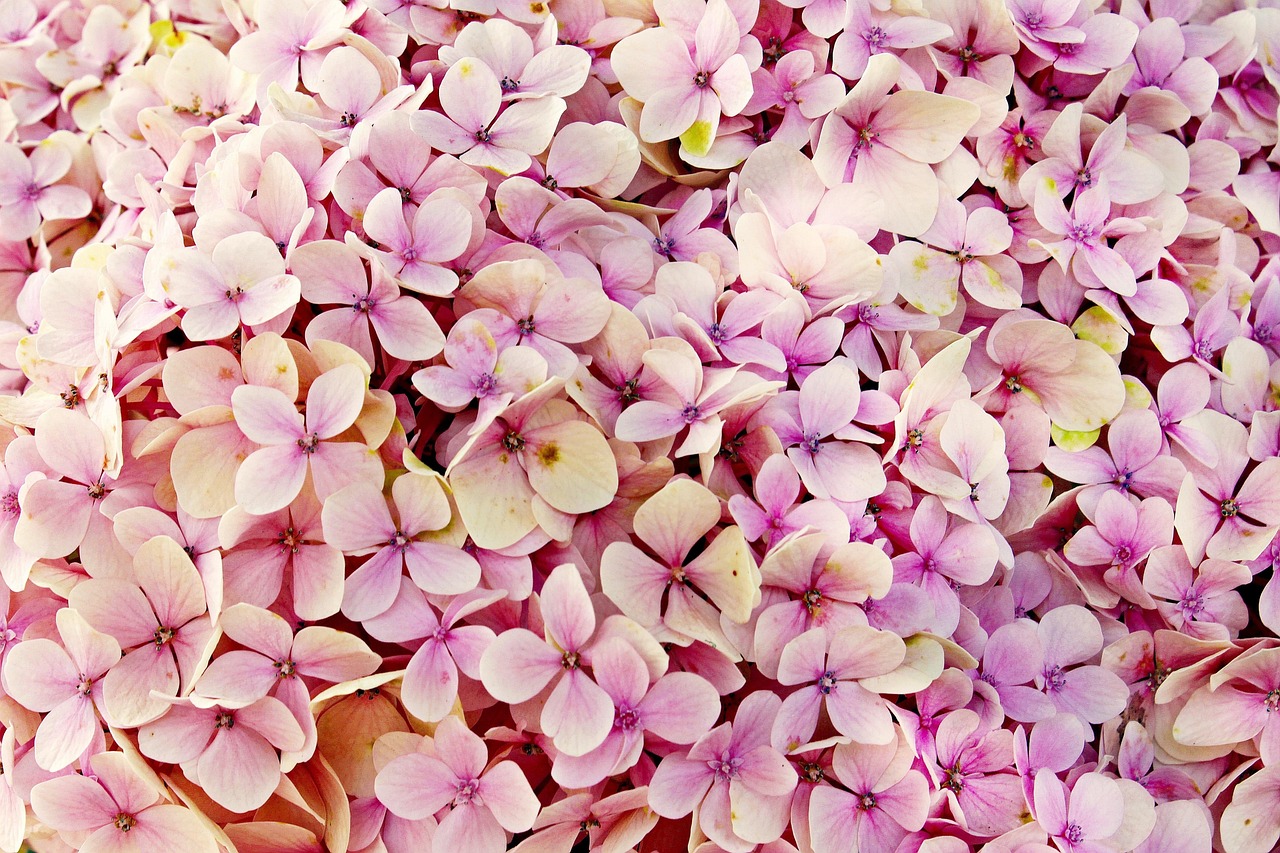The Quick Fire Hydrangea tree typically grows at a rate of 1 to 2 feet per year, reaching a mature height of 6 to 8 feet. With proper care, it can bloom rapidly, producing large clusters of white to pink flowers by mid-summer.
Hydrangeas are beloved for their stunning blooms and versatility in garden design. Among the various species, the Quick Fire Hydrangea stands out due to its unique growth rate and early blooming period. This deciduous shrub is known for its ability to produce flowers quickly, often starting in the summer and continuing well into fall. The Quick Fire variety is particularly valued for its adaptability, making it suitable for both novice and experienced gardeners.

One of the key features of the Quick Fire Hydrangea is its hardiness. It thrives in USDA zones 3 to 8, making it a popular choice across a wide range of climates. Gardeners appreciate this hydrangea’s resilience to fluctuating temperatures and its ability to flourish in various soil types, from sandy to clay soils. Additionally, its compact size makes it an excellent choice for smaller gardens or as a focal point in larger landscapes.
Understanding Growth Rate and Blooms
The growth rate of the Quick Fire Hydrangea is influenced by several factors, including soil quality, sunlight exposure, and watering practices. Generally, this hydrangea variety can be expected to grow between 1 to 2 feet each year. This relatively fast growth allows gardeners to see significant changes in their landscape within just a few seasons.
To maximize the growth rate and ensure a burst of blooms, gardeners should consider the following tips:

- Soil Quality: Use well-draining soil rich in organic matter. A pH level between 5.5 and 6.5 is ideal for optimal growth.
- Sunlight: Plant in a location that receives full sun to partial shade. Ideally, 6 hours of direct sunlight daily promotes healthy growth.
- Watering: Regular watering is essential, especially during dry spells. Maintain consistent moisture but avoid waterlogging.
- Fertilization: Apply a balanced fertilizer in early spring to encourage robust growth and vibrant blooms.
Caring for your Quick Fire Hydrangea not only enhances its beauty but also contributes to its growth rate. Pruning in late winter or early spring can help shape the plant and promote new growth. This practice allows gardeners to maintain an attractive form while encouraging more flowers.
Another remarkable characteristic of the Quick Fire Hydrangea is its unique flowering pattern. Flowers typically start as a creamy white shade before transitioning to soft pink as they mature. This color change adds visual interest to gardens throughout the growing season. The blooms are not only visually appealing but also attract pollinators like bees and butterflies, enhancing the ecological value of your garden.
| Aspect | Details |
|---|---|
| Growth Rate | 1 to 2 feet per year |
| Mature Height | 6 to 8 feet |
| Bloom Time | Mid-summer to fall |
| USDA Zones | 3 to 8 |
| Soil pH | 5.5 to 6.5 |
The Quick Fire Hydrangea’s ability to thrive in various conditions makes it an excellent choice for gardeners looking for reliable and beautiful blooms. By understanding its growth habits and factors affecting its health, you can enjoy a lush display of flowers in your landscape. Whether used as a standalone feature or combined with other plants, this hydrangea variety promises beauty and vibrancy all summer long.

Factors Influencing Growth Rate
Understanding the factors that influence the growth rate of the Quick Fire Hydrangea is essential for achieving optimal results. Various elements play a significant role in determining how quickly and healthily this plant will grow. Here are some critical factors to consider:
- Soil Type: The quality of the soil greatly affects growth. Well-draining, loamy soil enriched with organic matter is ideal.
- Watering Frequency: Consistent moisture is crucial. However, overwatering can lead to root rot, which can stifle growth.
- Sunlight Exposure: Quick Fire Hydrangeas prefer full sun to partial shade. A minimum of 6 hours of sunlight daily will promote vigorous growth.
- Fertilization: Regular feeding with a balanced fertilizer can enhance growth rates. Fertilizing in early spring helps to kickstart growth.
- Pruning: Proper pruning encourages new growth. Late winter or early spring is the best time to prune for optimal blooming.
Ideal Growing Conditions
To cultivate healthy Quick Fire Hydrangeas, it’s important to create the right growing conditions. This hydrangea variety thrives under specific environmental conditions. Below are some ideal growing conditions to keep in mind:
| Condition | Ideal Requirement |
|---|---|
| Sunlight | Full sun to partial shade |
| Soil Type | Loamy, well-drained soil |
| Watering | Consistently moist but not soggy |
| Fertilizer | Balanced fertilizer in early spring |
| Pruning Time | Late winter to early spring |
By ensuring these conditions are met, gardeners can expect their Quick Fire Hydrangeas to thrive and produce beautiful blooms. Neglecting any of these factors may lead to stunted growth or poor flowering.

Pest and Disease Management
Pests and diseases can pose a significant threat to the health and growth of Quick Fire Hydrangeas. Being proactive about pest management is vital for maintaining plant vigor. Below are common pests and diseases that affect this hydrangea variety:
- Aphids: These small insects can suck sap from the leaves, causing them to curl and distort. Regularly inspecting plants can help catch infestations early.
- Powdery Mildew: This fungal disease appears as a white powdery substance on leaves. It thrives in humid conditions and can be managed with proper air circulation and fungicides.
- Spider Mites: These tiny pests can cause yellowing leaves and webbing on plants. Increasing humidity around the plant can help deter them.
- Root Rot: Caused by overwatering, root rot can kill the plant if not addressed promptly. Ensuring good drainage is key to prevention.
Regular monitoring for signs of pests or diseases can help ensure the health of your Quick Fire Hydrangeas. Early detection allows for timely intervention, which can save the plant from serious damage.
Seasonal Care Tips
Caring for Quick Fire Hydrangeas throughout the seasons can enhance their growth and blooming potential. Here are some seasonal care tips:
- Spring: Begin with pruning to shape the plant and remove any dead or damaged branches. Fertilize with a balanced fertilizer to provide nutrients for new growth.
- Summer: Keep the soil consistently moist, especially during hot spells. Mulching around the base helps retain moisture and regulate soil temperature.
- Fall: Deadhead spent blooms to encourage additional flowering. Consider applying a layer of mulch to protect roots during winter.
- winter: Protect young plants from harsh winter conditions by covering them with burlap or mulch. Avoid pruning in late fall as it may expose new growth to cold damage.
By following these seasonal care tips, gardeners can ensure their Quick Fire Hydrangeas remain healthy and vibrant throughout the year, leading to a stunning display of blooms during the growing season.
Propagation Techniques for Quick Fire Hydrangeas
Propagation is an essential aspect of expanding your garden or introducing Quick Fire Hydrangeas to new locations. There are several effective methods for propagating this hydrangea variety. Each method has its unique advantages and can be chosen based on the gardener’s preference and resources.
1. Cuttings
Taking cuttings is one of the most popular ways to propagate Quick Fire Hydrangeas. This method allows you to clone an existing plant, ensuring the new plant has the same characteristics as the parent. Here’s how to do it:
- Select a Healthy Stem: Choose a healthy stem from the parent plant. The best time for taking cuttings is in late spring or early summer when the plant is actively growing.
- Take the Cutting: Using clean, sharp shears, cut a 4 to 6-inch section of the stem just below a leaf node.
- Prepare the Cutting: Remove the lower leaves, leaving only a couple of leaves at the top. This reduces moisture loss.
- Rooting Hormone: Dip the cut end in rooting hormone to encourage root development.
- Planting: Place the cutting in a pot filled with a mixture of perlite and peat moss. Keep the soil moist but not soggy.
- Provide Humidity: Cover the pot with a plastic bag or a clear plastic dome to maintain humidity until roots develop.
- Transplanting: Once roots are established, typically within 4 to 6 weeks, transplant the cutting into larger pots or directly into the garden.
2. Layering
This method involves encouraging a stem to grow roots while still attached to the parent plant. It is particularly effective for Quick Fire Hydrangeas due to their flexible stems. Here are the steps:
- Choose a Low Branch: Select a healthy, flexible branch that can easily reach the ground.
- Prepare the Ground: Dig a small trench where the branch will be placed.
- Bend the Branch: Gently bend the branch down to the ground and bury part of it in the trench, leaving the tip exposed.
- Secure in Place: Use soil or small rocks to hold the buried portion in place.
- Watering: Keep the area moist to encourage root growth. This process can take several months.
- Sever and Transplant: Once roots are established, sever the new plant from the parent and transplant it to its desired location.
Common Challenges in Growing Quick Fire Hydrangeas
While Quick Fire Hydrangeas are relatively easy to grow, several challenges may arise that can affect their growth and blooming potential. Understanding these challenges can help gardeners take proactive steps to mitigate them.
Pests
Pests can be a significant threat to Quick Fire Hydrangeas. Regular monitoring and early intervention are essential. Common pests include:
- Aphids: Small insects that suck sap from leaves, causing wilting and curling.
- Spider Mites: Tiny pests that create webs and cause leaf discoloration.
- Japanese Beetles: These beetles feed on foliage, leaving skeletonized leaves.
Diseases
Diseases can also impact hydrangeas. Some common issues include:
- Powdery Mildew: A fungal disease that appears as white spots on leaves, often due to humid conditions.
- Botrytis Blight: This disease affects flowers and foliage, leading to brown spots and decay.
Cultivating Quick Fire Hydrangeas in Containers
For those with limited space or who prefer mobility in their gardening, growing Quick Fire Hydrangeas in containers can be an excellent option. Here are some tips for successful container gardening:
- Selecting the Right Container: Choose a pot that is at least 18 inches in diameter with drainage holes to prevent water retention.
- Soil Mix: Use high-quality potting soil mixed with compost for nutrients and drainage.
- Watering Needs: Container plants may require more frequent watering, especially during hot weather. Monitor soil moisture regularly.
- Fertilization: Use a slow-release fertilizer every few months to ensure adequate nutrients are available.
- Winter Care: In colder climates, consider bringing containers indoors during winter or insulating them to protect roots from freezing temperatures.
By following these guidelines for propagation, pest management, and container care, gardeners can enhance their experience with Quick Fire Hydrangeas while enjoying vibrant blooms year after year.
Additional Tips for Successful Hydrangea Care
In addition to the previously discussed aspects of growing Quick Fire Hydrangeas, there are several other tips that can help ensure a thriving plant. These practices focus on long-term care and environmental considerations that can enhance the overall health of your hydrangeas.
Mulching
Applying a layer of mulch around your Quick Fire Hydrangeas can provide numerous benefits:
- Moisture Retention: Mulch helps retain soil moisture, reducing the need for frequent watering.
- Weed Control: A thick layer of mulch can suppress weed growth, which competes for nutrients and water.
- Temperature Regulation: Mulch insulates the soil, keeping it cooler in summer and protecting roots from freezing in winter.
Choosing Companion Plants
Pairing Quick Fire Hydrangeas with complementary plants can enhance your garden’s aesthetic and health. Consider the following companion plants:
- Daylilies: Their vibrant blooms and similar care requirements make them a great choice.
- Hostas: These shade-loving plants add texture and contrast to the garden.
- Astilbes: Their feathery flowers provide a lovely contrast to hydrangeas and thrive in similar conditions.
Seasonal Adjustments
As seasons change, so do the needs of your Quick Fire Hydrangeas. Be prepared to adjust your care routine according to seasonal shifts:
- Spring: Increase watering as temperatures rise, and consider applying a balanced fertilizer to support new growth.
- Summer: Monitor for pests more frequently and ensure consistent moisture during heatwaves.
- Fall: Prepare for winter by applying mulch and reducing watering as the plant enters dormancy.
- Winter: Protect roots from freezing temperatures by insulating containers or providing cover for garden plants.
Conclusion
The Quick Fire Hydrangea is a remarkable choice for gardeners seeking rapid blooming and vibrant color in their landscapes. With its impressive growth rate, adaptability, and stunning flower display, this hydrangea variety can bring beauty and texture to any garden space. Understanding the key factors that influence its growth, such as soil quality, watering practices, and pest management, is essential for success.
By incorporating seasonal care tips, proper propagation techniques, and ensuring suitable growing conditions, gardeners can maximize the potential of Quick Fire Hydrangeas. Whether planted in the ground or in containers, these hydrangeas can thrive with the right care and attention. Ultimately, cultivating Quick Fire Hydrangeas not only enhances the aesthetic appeal of your garden but also provides an opportunity to connect with nature through gardening.
Embrace the journey of growing Quick Fire Hydrangeas and enjoy the rewards of their beautiful blooms throughout the seasons. With patience and dedication, you will create a stunning display that transforms your outdoor space into a vibrant oasis.
